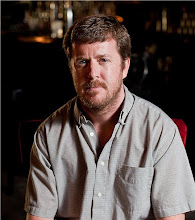Well, I finished the epilogue to Claws. As it is right now, the novel is just under 70,000 words. I think I have one chapter I need to re-write (the Charlie "The Chopper" Rutledge intro chapter), but other than that, I think the book is ready for an editorial read through; once I get that done, I'll ask Susan, Shelley, Veronica, and maybe Lisa, too, if we could workshop it. I'll make the changes they suggest, and then we'll begin to send it out.
Mimosa has agreed to do cover art for a collection of four stories (The Kiribati Test, Born on the Bayou, The Big Bang, and Harvest Time), and we're going to go for something in the tradition of the old Ace Double series pulp covers. I may try to get a book-cover blurb from Joe Bob Briggs for this collection.
I checked out "Disney's World" a biography by Leonard Mosley from the Apache Junction Library, and I highly recommend it to all Walt Disney enthusiasts. I probably read 100 pages of it last night. It's slightly different than the Disney biography I read last fall by Bob Thomas; particularly in its depiction of the stress that led up to Disney's nervous breakdown and suicide attempt at 31. Thomas doesn't even mention it, whereas Mosley knew the doctor that Lillian Disney called when she found her husband out cold with sleeping pills and booze. They had to pump his stomach it seems. To read Mosley's description of the years between 25-35 in Walt's life is a dose of reality. A lot of people in the business saw this brash young kid, and they thought he was a naive simp. And to some degree, he didn't prove 'em wrong -- until Snow White, anyway. But Walt was a genius at inspiring people. He had an energy and enthusiasm -- an optimism -- that was irrepressible and contagious. With work like the early Mickey cartoons and the Three Little Pigs' "Who's Afraid of the Big Bad Wolf?" theme, he offered a public a much-needed lift out of the despair of the early Depression years. That ain't such a bad reason to live for....
Well, I think I'm going to work on my short story "The Cuda" -- the one about the miracle-working 1973 Plymouth Hemi Cuda -- today. The basic premise of "The Cuda" is that there's this broken down clunker of a car that if you put something broken in its trunk -- a toaster, a broken sign, etc. -- at night, and you come out the next day; the object will be fixed as good as new! It's part Rod Serling, part Christine.
I'm so mentally drained at having written seven novels these past 6-7 years that the thought of starting a new novel (even after the Hawaii trip this coming June) seems daunting. I've got the early outlines of this new Colorado novel pretty clear in my head. I'm going to try and create a story around the these two fraternal twins who have supernatural powers. I've already written the opening 5,000 words with Amber Page as a kind of comic-book-style, 12-year-old superhero who busts up three goons' robbing a Circle K convenient store in Oracle, Arizona on a dark and stormy night. The novel then goes into the twins' story -- their family is moving from Muncie, Indiana to Telluride, Colorado. And I have at least two "hooks" in mind for the early part of their story. I've been envisioning this novel for at least a year and have worked through several different strategies in Culpepper, The Miracle, and The Colorado Sequence process-wise to get me to the point I need to be at to write this "Gemini" novel. We'll see...
Stacey
Stacey Cochran
Stacey Cochran discusses stuff


0 Comments:
Post a Comment
<< Home